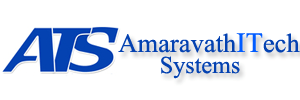Client Collaboration Tools allow it smoother and easier to collaborate on technical projects together. It removes bottlenecks in procedures for feedback and acceptance and facilitates collaboration in real-time.
The three core areas of functionality for collaboration tools are:
- Communication
- Project & task management
- File sharing & management
One function set over another is emphasized by certain items. This takes a best-of-breed approach and if integrations are provided, they perform well. Slack, for instance, is an app for online team communication based on chatting and exchanging information. It also provides capabilities for audio and video conferencing. It integrates with other tech platforms for anything else.
Because each of them has somewhat different specialties, all of the above methods are not exactly equivalent. You will want to invest in a few distinct forms of teamwork software, depending on the company’s needs. For example, for informal communication, many teams use a chat program such as Slack and often use online conferencing tools to host online meetings.
Client Collaboration Tools are closely related to several other types of software, including:
- Business communications (e.g. email, VoIP, web conferencing)
- Community platforms
- Cloud storage
- Project management software
- Online office suites (such as G Suite and Microsoft Office 365)
Collaboration capabilities cover all of these channels, but most are limited to a single medium or method of connection.
These more conventional methods may often be supplemented by collaboration tools, but the incorporation of collaboration tools with the current communication and workflow framework is more common. Collaboration tools also carry communications to a convenient central location that would normally be managed by different networks.
Top Client Collaboration Tools
With the multitude of business opportunities and the wide variety of functionality on each of them, it can be a struggle to find the best collaborative platform. Any of the greatest you can ever find are included in this post. Bring cooperation to the next step for the consumers!
Teamweek
Only when everybody is working on the same timeline does successful communication with your customers work. With Teamweek, you can align schedules by the needs of your customer.
Its user-friendly project preparation functionality also means that any deadlines are never met.
The high graphic architecture of Teamweek is one of the reasons why it is a favorite among many companies. Tasks on a project with multiple partners are color-coded, so at every level, you will already know who is working on what role.
You can also drag and drop activities onto your schedule on particular days or weeks.
All the basics, including mission notes, checklist, and due dates, are included in the work cards. To express their wishes, customers should use these features, and anyone working on the projects will still have a helpful guide to keep on track.
Ryver
Ryver is a perfect choice if you are looking for a networking platform that can also act as a communication hub. Task scheduling, process integration, and community chats include some of the key functions.
If you want to keep all client contact and project information in one browser, it is a perfect choice for you.
CA Flowdock
Another heavyweight all-in-one platform for teamwork is CA Flowdock. In one browser, you can combine your emails, requests, updates, project management, and client support. You never have much to leave the forum for.
Before you can start using this method to its maximum potential, there is a learning curve to overcome, though.
Dropbox Paper
Dropbox Paper is a super-helpful Dropbox client communication method. If your company revolves around working on files for your clients in real-time, it is a great solution.
It provides all the standard functionality, such as version history and feedback, that you would get from Dropbox. Integration of your calendar is also sponsored.
This is a helpful tool that can help ensure that on meeting days you never fail to take notes. You’ll have to search beyond the site for more in-depth discussions with your consumers, however.
ProofHub
ProofHub is a comprehensive tool for teamwork with an emphasis on unifying all the experiences. It is a lot more than that, though. You will build reports, Gantt diagrams, timesheets, forums, and more using this cloud-based collaboration platform.
It is a full-featured solution for project management that allows assigning tasks and designing workflow stages fast. Your internal staff and your customers will operate quicker and better by using ProofHub’s features.
Google Docs
Google Docs is a significant relationship for many organizations. They maintain compliance with Google Docs even though brands are using other solutions.
If you are searching for a quicker way to operate on documents with your customers, it is another excellent choice. Without the need to approach the other person on the project, you will work together in real-time, get approval, see new developments, and more.
Trello
One of the most efficient collaboration platforms on the network today is Trello. Its visually persuasive boards, lists, and cards make it a breeze to arrange and coordinate tasks between you and your customer.
With a fast look at the screen, any stakeholder of a project will see how it is going. The ease of use and simplicity of Trello ensures that individuals from all sorts of businesses and varying degrees of technical know-how can get along fairly quickly.
Monday.com
For a fast-paced job setting, this is a project management solution. Will you need to coordinate multiple tasks over very long periods while delivering daily work updates? You’re going to love Monday.com.
The platform makes it easy to update roles and tasks. The network advocates transparency and promotes collaboration of other programs. The user interface is super-friendly as well.
Wrike
Wrike makes juggling tasks enjoyable. Thanks to its incredibly intuitive user-interface, it is super-easy to schedule, implement and produce projects on Wrike. For organizations and customers who have on-going projects, Wrike embraces recurring activities.
You can generate charts from Gantt, develop project directories, log time, and more. You should set up key or mini-milestones with deadlines for large projects.
GanttPRO
GanttPro is a charting solution that is user-friendly, but it does a lot more than that. It is a full-featured collaborative platform trusted in different niches around the world by several organizations.
Any of GanttPro’s key features include project monitoring, preparation, deadlines, support for recurring projects, and more. It is another very easy method for teamwork that everyone would immediately get along with.
Podio
Podio is a popular communication platform trusted by many major corporations across the globe. When you are thinking about producing outcomes without any disruptions, it is the best solution.
It preserves some of the basic functionality that you would come to see on a forum for collaboration, such as screens, tables, and more. For project management, file sharing, and all your conversations, you should use Podio.
The peer identification feature of Podio helps you to recognize your teammates who are consistently meeting their deliverables. Having people motivated will boost the mood around the work environment.
Asana
Asana is one of the web’s oldest sites for project management today. Asana is valued by companies and their consumers because it has a vast variety of qualities intended to keep everybody focused on the larger picture.
With due dates, you can add projects and assignments and even set priority levels. The activities can be presented as a timeline or grid in a project browser. For easier preparation, you may even overlap the activities with your schedule.
To tasks that have been developed, collaborators will add files and comments. Anything in a project would stay in one place like this.
Airtable
Airtable is a work-horse application that incorporates a database with a cloud-based spreadsheet. Often, it is a super-organized process control solution.
The style of its assignment display is identical to what you can see on Trello, and it enables calendar integration.
Tasks and tasks can be added with connections, photos, and comments. You can increase efficiency and optimize correspondence using Airtable. AirTable updates in real-time, as is common with other collaborative platforms, so that the customer can see the success status of all tasks at a glance.
Highfive
Highfive is a platform for teamwork that just excels at one thing: video conferencing. It is a wireless conference room with complete features that provides more than normal smartphone and web camera applications.
Without the need to put everybody under one roof, you will now sit in digital meetings with multiple main players on a project.
You don’t have to think about software accessibility, login codes, and other equivalent bottlenecks with Highfive that make it a hassle for interactive meetings. Amazingly, to get into a meeting with you, the customers don’t have to download any applications.
They will engage in your conference directly from any web browser.
You don’t have to think about any restrictions either. Your meetings will take place for as long as needed. Highfive helps you to document meetings as well.
There is a fully-encrypted group chat mechanism on the website if you want to continue the conversation via chat.
Xtensio
Xtensio is a collaborative platform built on the cloud that enables teams to quickly produce beautiful live documents and presentations that can be updated and exchanged in real-time.
The tool is great for handling multiple forms of collateral for companies. Xtensio also provides a wide variety of company templates to pick from, and you don’t have to build papers from scratch.
You would certainly enjoy Xtensio if you want to wow your customers and colleagues with stunning presentations.
How to Choose a Collaboration Tool
In their way, all the teamwork methods we have reviewed above are outstanding solutions. However, there are certainly major considerations to weigh before you make your decision.
The Adoption Rate
A method is only helpful if the customer and anyone else who will be working on a project is not unfamiliar with it. It should at least provide an intuitive user interface if the platform you have selected is not popular. And everyone will easily get along.
Your Specific Needs
Why would you need a tool for collaboration? If you know your unique needs, not paying for functionality you don’t need or dealing with unnecessarily complex platforms would be simpler for you.
Here are some questions you should ask:
- What does your typical project look like?
- How would you like to handle communication between collaborators?
- How do you want to manage project files?
- How many people will collaborate on a typical project?
- Are there specific apps you’d like to integrate into your collaboration tool?
Cost
In this list, most of the teamwork platforms we covered bill monthly subscriptions. All of them, though, have a simple package for free as well. Go over the proposals for free.
You do not need any of the advanced features on the app to work with your customer while you are running a small company.
Trial models which be sold by sites that do not offer free plans. Before you order a membership, the trial edition can give you an insight into the available functionality.
Prefer multiple features
Some instruments provide outstanding support but are based only on one type of team teamwork. Give any attention to how beneficial this is really. Teams may end up wasting time flipping between additional applications. It’s easier to opt for a feature-rich instrument that encourages users to use it in several different ways.
Look for ease of use
This is certainly one of the most significant parameters. If a service works, it would not support teams (especially fast-growing teams) if it takes a lot of time to get used to it. Request a tutorial and keep an eye out for an intuitive interface and easy navigation.
Pay attention to privacy options
Team cooperation does not mean that all communications and files can be public. Often, you choose to have intimate talks with team members or focus on important tasks. Be sure that before you pick a provider, you look at privacy choices.
Opt for cloud
There are also drawbacks of cloud-based technologies. By allowing you to see the latest edits and events, it will fix the version control headaches. All information is saved electronically, so everybody, no matter where they are, will be on the same website.
Ask for integrations and compatibility
Know that using a product with many features is better? Ok, not every time. Occasionally, you find a mechanism that perfectly does one thing. Integration is pivotal. Look for tools that connect with other apps or software seamlessly. Compatibility is important, too. For eg, all the file types your team usually uses should be covered by your tools.
Conclusion
In today’s industry, there are several communication platforms available. Your budget, the number of partners you plan to have on a project, your file management, and storage requirements, as well as your contact choices, would be the best choice for your brand.
Since you choose a method for consumer cooperation, you must have the typical customer in mind during the selection process. If you are dealing with consumers from a different technical context, this is particularly true.
A communication network that works for an accomplished software developer can confuse a small owner of an e-commerce store looking to collaborate with your group.












